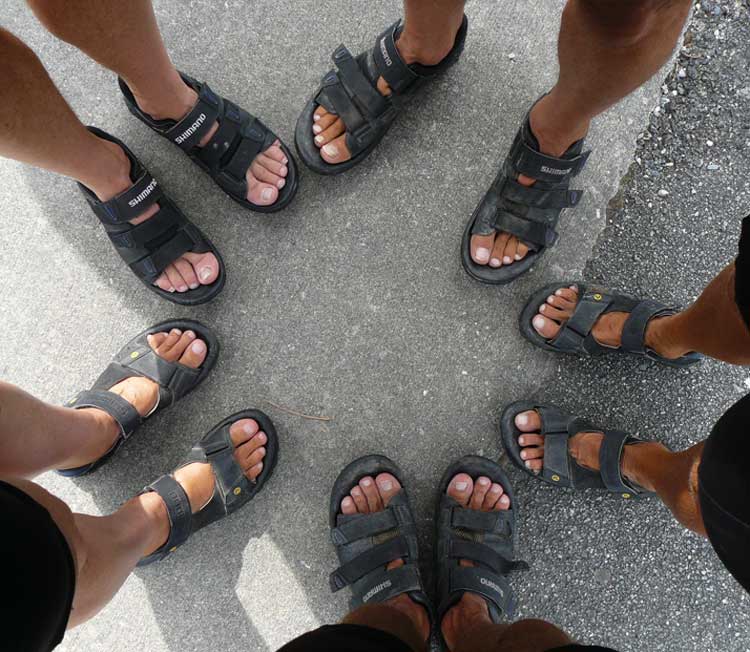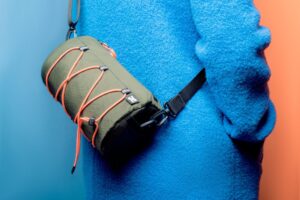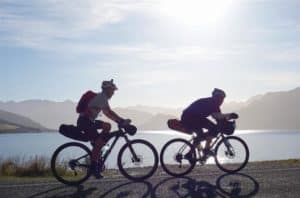Updated: 24th September 2025
Maybe you’re like me and would rather wear sandals when on tour or bikepacking than having your feet fully enclosed in shoes. Not having the right footwear can prevent our feet from breathing properly, and it seems like a better idea, in my opinion, to wear sandals. I love wearing thongs or flip-flops when I’m on tour, and I get strange looks all the time. But since I’m wanting to do more bikepacking and off-road riding, I want footwear that keeps my feet aerated without risking it with flip-flops. The best alternative to this problem is cycling sandals.
Since I’m in the market for a pair myself, I’ve searched all over the web for the best cycling sandals that are ideal for bikepacking and bike touring. I’ve also asked many bike travelers what they use and can recommend from their experience. Below is a comprehensive list of all the best options available in 2025.
When looking for cycling sandals, you want to ensure you get a pair that’s comfortable and ideally works for both riding and short hikes if you’re heading off on a bikepacking adventure. Cycling sandals are a much better choice than shoes for biking in heat and rain. Even in cold weather, you can add fleece socks or waterproof socks. I personally prefer the feeling of wind between my toes!
Is It Okay to Cycle in Sandals?
Absolutely, cycling in sandals is not only okay but can be highly beneficial for many riders, especially during warm weather touring and bikepacking adventures. SPD sandals are unrivaled in warm-to-hot conditions as there isn’t a more ventilating cycling shoe available. Sandals also dry incredibly fast, which is perfect for those times when it’s raining or when you’re tackling river crossings. The key is choosing proper cycling sandals designed for pedaling rather than regular walking sandals, which lack the stiffness and secure attachment needed for efficient power transfer and safety.
My own experience cycling from Melbourne to Cairns in Australia taught me valuable lessons about footwear choice. I actually completed significant portions of that tour wearing thongs (flip-flops as we call them in Australia), which drew plenty of curious stares from other cyclists and locals. While this unconventional choice worked for casual touring on sealed roads, it taught me the limitations of non-cycling footwear. The lack of secure foot placement became problematic during longer climbs, and the minimal protection left my feet vulnerable to debris. However, the freedom and ventilation were unmatched, which is why proper cycling sandals became such an appealing compromise for future adventures.
If you’re looking for more traditional enclosed footwear options, check out our comprehensive guide to bikepacking shoes which covers boots, trail runners, and other closed-toe options for different adventure cycling scenarios.
The Best Cycling Sandals for Bikepacking
Shimano SH-SD501 (SD5)
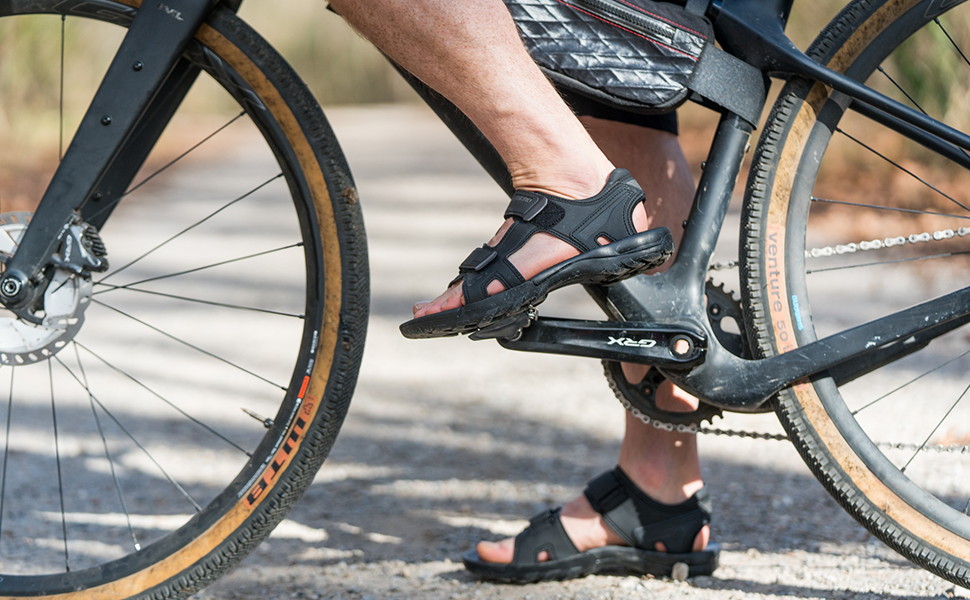
The current model Shimano SD501 cycling sandals represent a significant evolution from their predecessors, featuring a much more flexible sole than the older SD66L or previous generations. This flexibility is a double-edged sword that you may or may not prefer. The increased flexibility makes the sandals more comfortable for walking around town and camp, but some riders find there isn’t enough support in the footbed for extended cycling sessions.
The sole is notably softer, which can result in hot spots as the pedal deforms it, creating pressure points on the feet during long rides. However, this same flexibility makes them excellent for walking. They work wonderfully for biking and walking around town and camp, but depending on your tolerance for foot support, they might not be ideal for everyone. As someone who uses minimal shoes for running and has experience with less structured footwear, I’m personally considering these compared to other models, with the major factor being their durability and reputation for lasting longer than most other options.
SPD sandals are consistently comfortable and wear exceptionally well. One seasoned bike tourer mentioned they’re on their second pair in a decade, which represents impressive longevity. Your feet do collect more dirt than with enclosed shoes, though, so you’ll need to wash before getting into your sleeping bag or wash the liner more frequently. You may also develop a tanned imprint on your feet from the strap pattern.
These sandals lack the stiffness of traditional cycling shoes, which creates a trade-off that different people will prioritize differently. If you’re comfortable with the softness of the sole (and it’s no softer than any regular shoe, just not stiff like a bike-specific shoe), then they would be excellent general-purpose footwear for both on and off the bike during tours. Some users have reported that they feel weird and clunky and cause blisters, which is exactly why many try to wear sandals in the first place. However, this feedback is uncommon and might be related to sizing issues.
One of Shimano’s greatest strengths is that their products typically last longer than most other options on the market. These sandals have similar flexibility to the Keen Commuter sole, and the new Shimano SD501 is much less stiff than older Shimano sandals. Overall, they’re comfortable, quick-drying, and very suitable for walking around in, but they lack some on-bike riding comfort due to insufficient stiffness. They seem like the better option if you’re planning to go bikepacking with lots of hike-a-bike sections, where the sandal’s flexibility would be best suited to those demands.
Quoc x Restrap Sandal
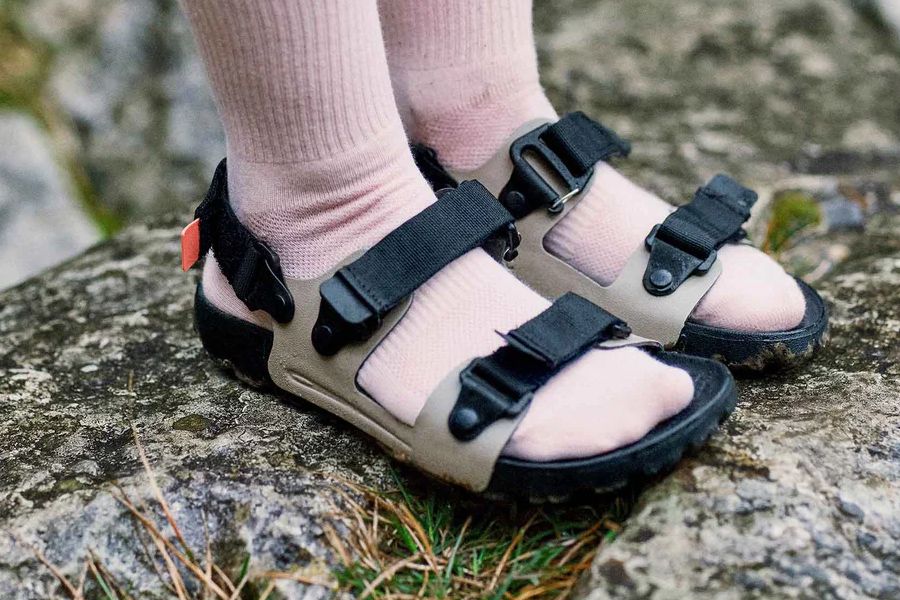
The Quoc x Restrap collaboration has created something truly special in the cycling sandal world. These sandals strike a unique balance of having a soft footbed, lightweight construction, secure fit, and rigid sole. If you’re searching for a sturdy camp shoe that you won’t have any excuse not to haul along on your next trip, these are undoubtedly a strong contender.
Effectively an upgraded version of their recent Lala Slides but made in the UK, the new Quoc x Restrap Sandals are lightweight, comfortable, and designed to strap right to your bikepacking bags. They serve as an excellent camp shoe solution after a long gravel adventure day riding in cycling shoes. The sandal features an anatomically designed footbed with excellent cushioning and arch shaping, while its grippy anti-slip tread makes it perfectly suited for those relaxed hours after a long day in the saddle.
Whether you’re at a woodland campsite, spending a night in the hammock by the beach, or exploring a new town after a day’s ride, these sandals provide the comfort and functionality you need. The design combines casual comfort with minimalist elegance and a flair of functionality that’s perfect for the outdoor adventurer. They’re specifically designed as post-ride slip-ons but work equally well as primary camp footwear for bikepackers who want to travel light.
Xero Genesis
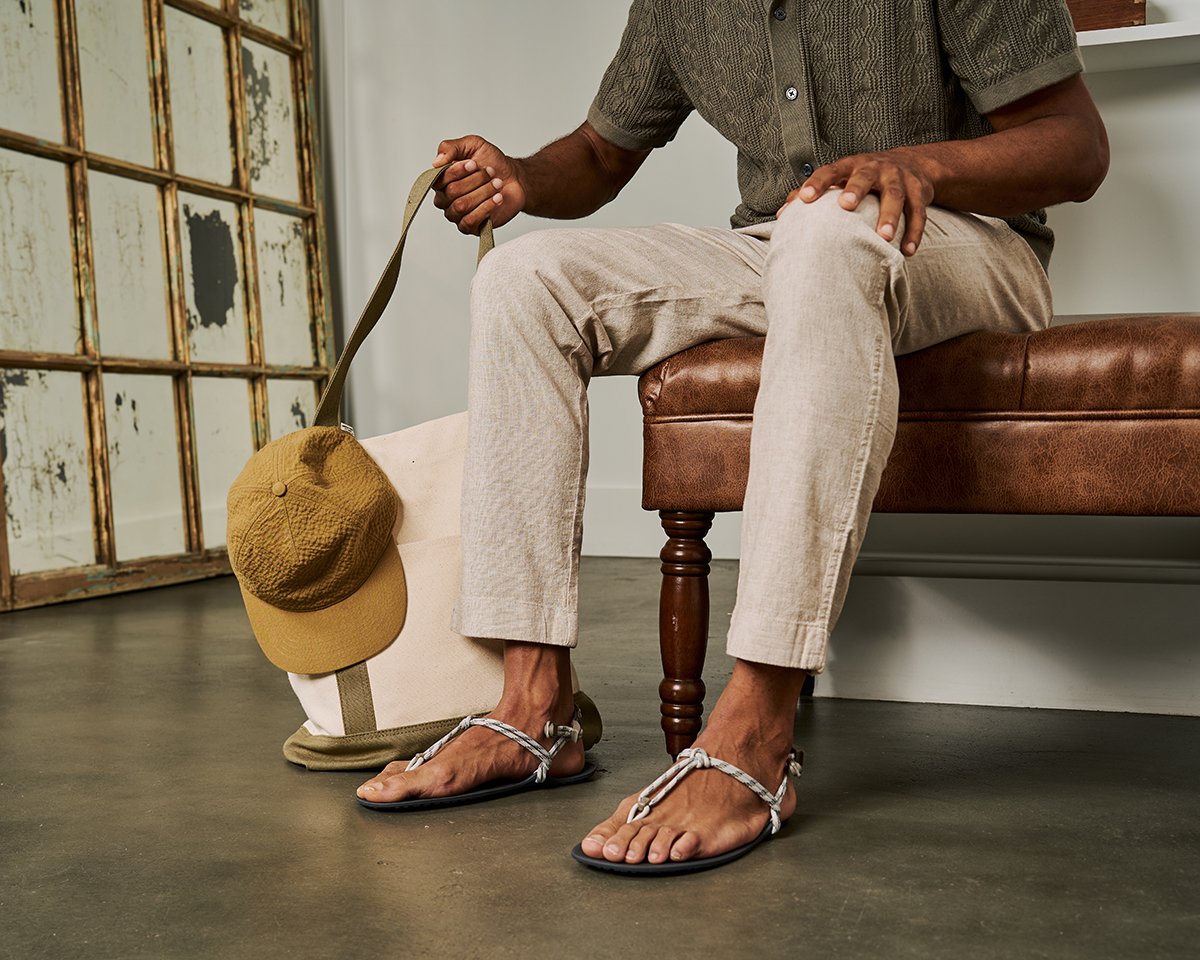
The Xero Genesis is inspired by their earliest DIY sandal kits and represents one of the lightest and most flexible sandals they’ve produced. These have become some of the favorite camp shoes among experienced bikepackers who’ve used them on numerous overnight trips. The Genesis offers an ultra-minimalist approach to camp footwear while still providing adequate protection and comfort for post-ride activities.
These sandals excel as ultralight camp shoes, making them perfect for bikepackers who count every gram. Their flexible design allows them to pack down small, and their quick-drying properties make them ideal for multi-day adventures where you might encounter streams, rain, or morning dew. The minimalist construction appeals to those who prefer a more natural foot feel while still wanting protection from rocks, sticks, and other trail debris.
The Xero Genesis works particularly well for riders who embrace the minimalist philosophy in their gear choices and want camp footwear that complements lightweight bikepacking setups. They’re not designed for cycling itself but serve as excellent recovery footwear after long days in the saddle.
Luna Sandals
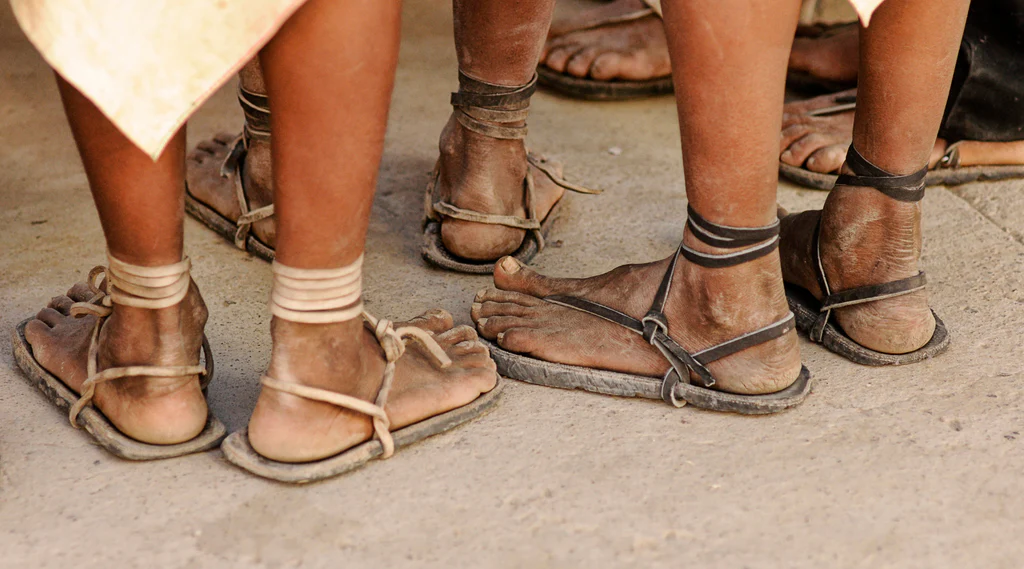
Luna Sandals has built a reputation for creating durable, comfortable sandals that work well for various outdoor activities, including as camp shoes for bikepacking adventures. Their huarache-style construction offers a unique blend of minimalism and functionality that appeals to many adventure cyclists. The Luna Mono and other models in their lineup provide excellent ground feel while still offering protection from trail hazards.
These sandals work particularly well for bikepackers who want versatile footwear that can handle both camp duties and light hiking. The traditional huarache design allows for natural foot movement while providing enough sole protection for rocky or uneven terrain. Many long-distance cyclists appreciate Luna’s commitment to repairable construction, as the sandals can be resoled when the tread wears down.
Luna sandals tend to have a learning curve as your feet adapt to the minimalist design, but once broken in, they provide excellent comfort for extended wear. They’re particularly popular among cyclists who embrace natural movement patterns and want camp footwear that doesn’t restrict their feet after long days in cycling shoes.
Bedrock Cairn Adventure Sandals
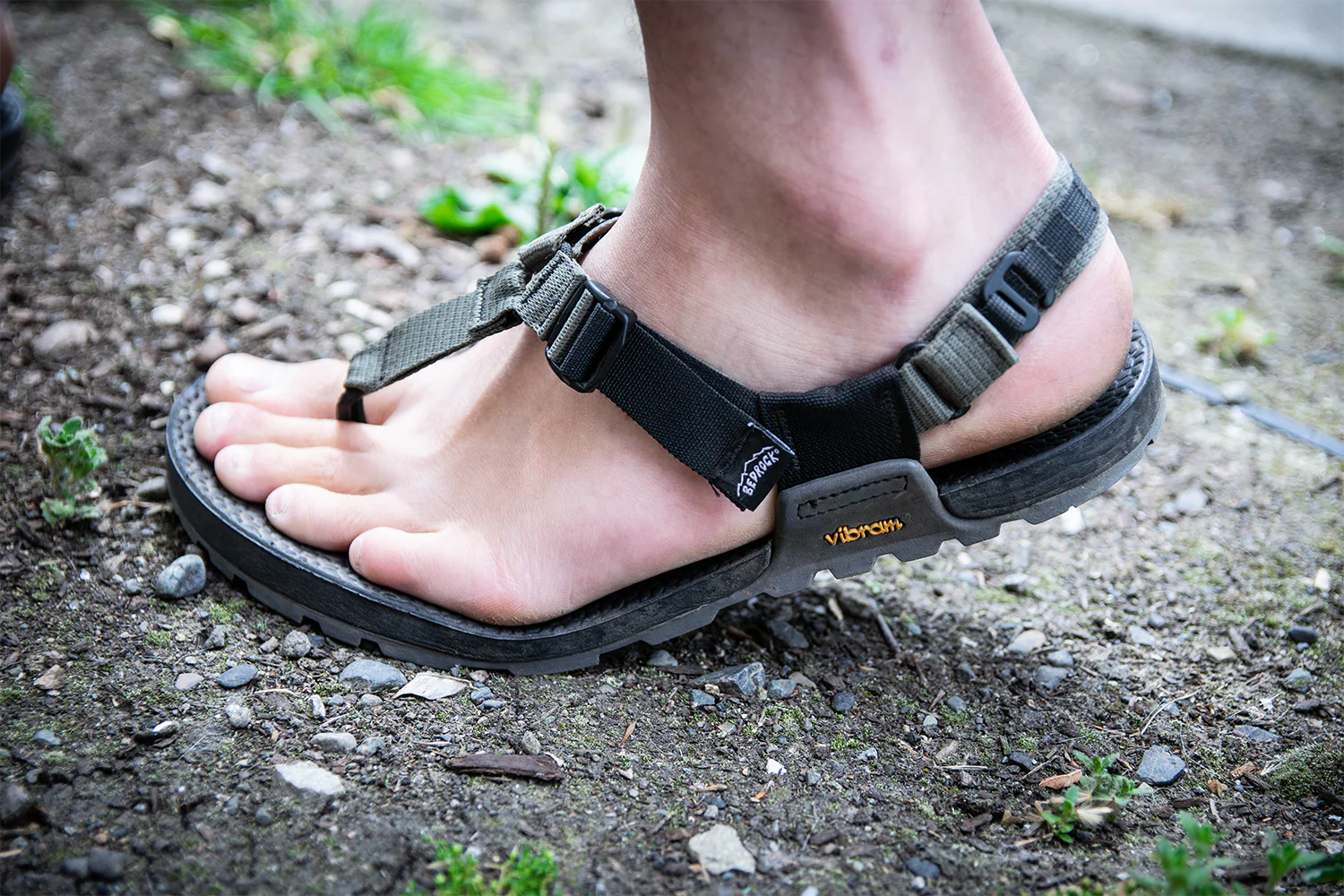
The Bedrock Cairn Adventure Sandals have gained significant praise from outdoor enthusiasts for their lightweight footbed and excellent performance across variable terrain. These sandals push the limits of what’s possible with open-toed footwear, offering impressive capability for both camp use and light adventure activities during bikepacking trips.
The Cairn model features Bedrock’s signature minimalist design philosophy while incorporating enough structure to handle demanding conditions. The sandals excel in dry, loose conditions and provide excellent grip on rock and hardpack surfaces commonly encountered around campsites and during short hikes away from your bike. Their lightweight construction makes them appealing to weight-conscious bikepackers who don’t want to carry heavy camp shoes.
Friends of mine in the bikepacking community have consistently praised the Bedrock Cairn’s performance across different terrain types. The sandals offer a good balance between minimalist design and practical functionality, though they do come with a higher price tag than some alternatives. The investment pays off in durability and versatility, making them suitable for bikepackers who want camp footwear capable of handling more adventurous pursuits.
Keen Commuter
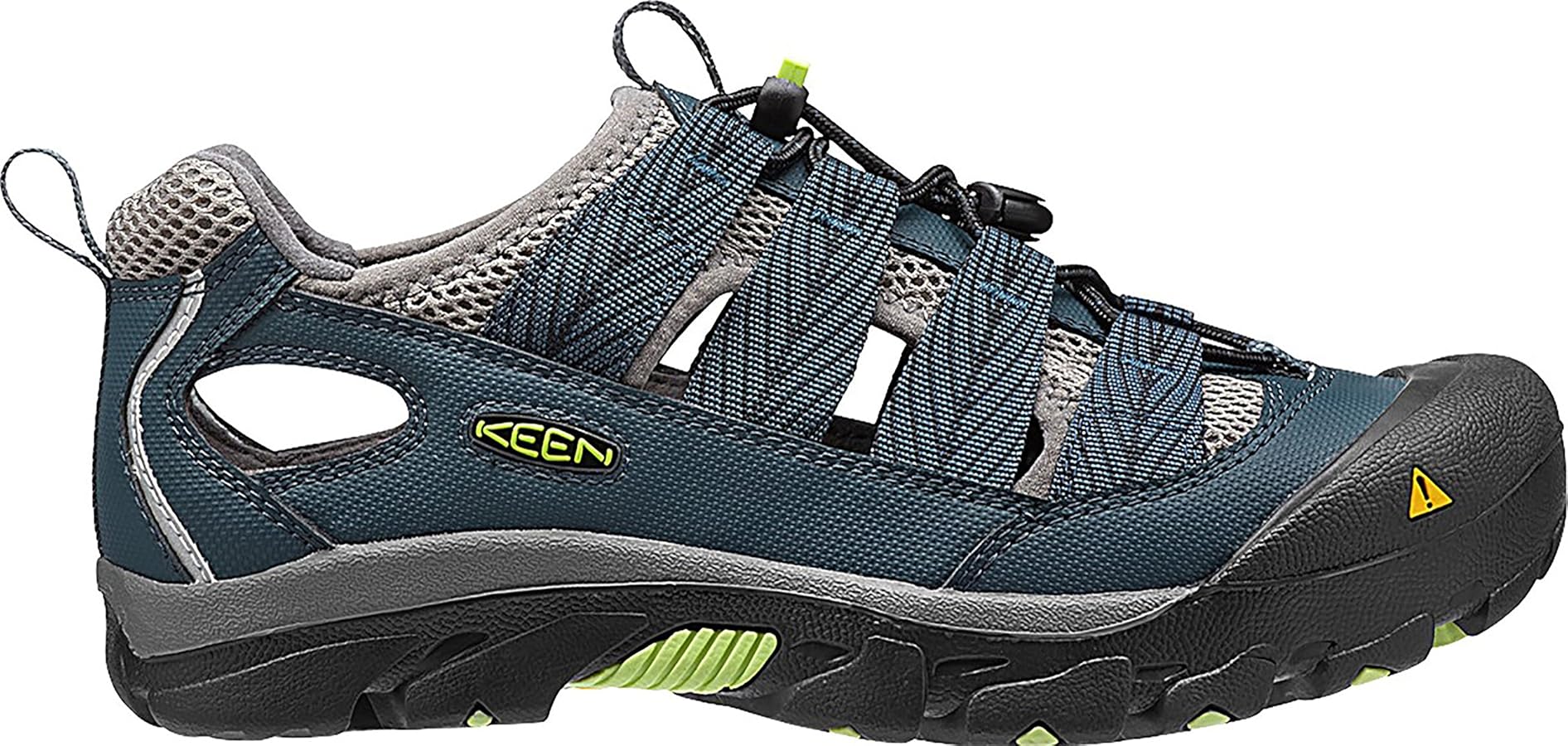
The Keen Commuter sandals, despite their name suggesting urban use only, make excellent sandals for cross-country bike trips and touring applications. They’re additionally great for walking around towns when touring, and this multipurpose capability is something to look for in touring or bikepacking footwear. However, availability has become a significant issue with these sandals.
Depending on your shoe size and foot width, you may need to go half a size up from normal. It’s highly recommended to visit a store and try them on before choosing your size. These sandals look narrow but actually aren’t, though they don’t have the same feel as normal Keen sandals since they serve a specific cycling-related purpose.
For walking around, they don’t feel like normal Keen sandals, but they’re also not incredibly flexible, which means sacrificing some on-bike comfort compared to more flexible options. These sandals were popular among touring cyclists, with roughly a 50/50 split between these and the Shimano options among experienced riders. However, Keen has struggled with consistent production, and they’re frequently in and out of availability, especially in men’s sizes.
The major advantage Keens have over Shimanos is the toe protection, but they suffer from durability issues and don’t seem to last as long as Shimano products. Users have reported that the Keen soles crack and break over time. While the Keens are comfortable, they also take longer to dry out than some alternatives, which can be problematic during wet weather touring.
Exustar E-SS503
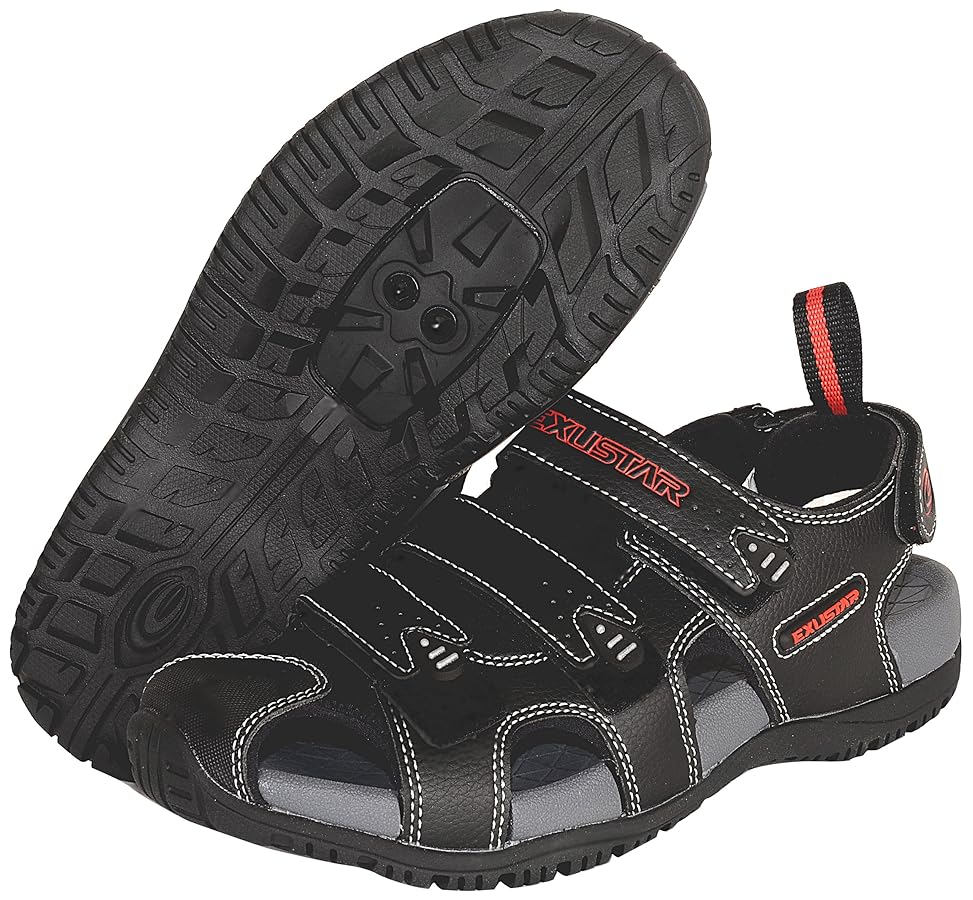
The Exustar E-SS503 represents a more budget-friendly cycling sandal option, though prices fluctuate depending on size availability. These sandals lean toward the stiffer sole side of the spectrum, making them better for cycling efficiency on the bike but less favored for long hikes and hike-a-bike situations that are common in bikepacking.
For cyclists who need less flexibility due to foot issues like dorsal bunions or similar conditions, these sandals offer the support needed while walking. The sandal features thoughtful design elements and generally fits well, providing good overall comfort. However, some users have reported craftsmanship issues, with reports of the outsole separating from the shoe after only 30 days of light commuting, suggesting quality control problems with the adhesive.
These are closed-toe sandals, which may provide peace of mind depending on your preferences, unlike the more open Shimano designs. The primary focus is cycling rather than walking comfort, so you may not want to walk around in these sandals all day. While they’re far cooler than traditional cycling shoes, they cover more of the foot than ordinary sandals, allowing for the tight fit needed to transfer power efficiently to the pedals during cycling.
Nashbar Ragster II
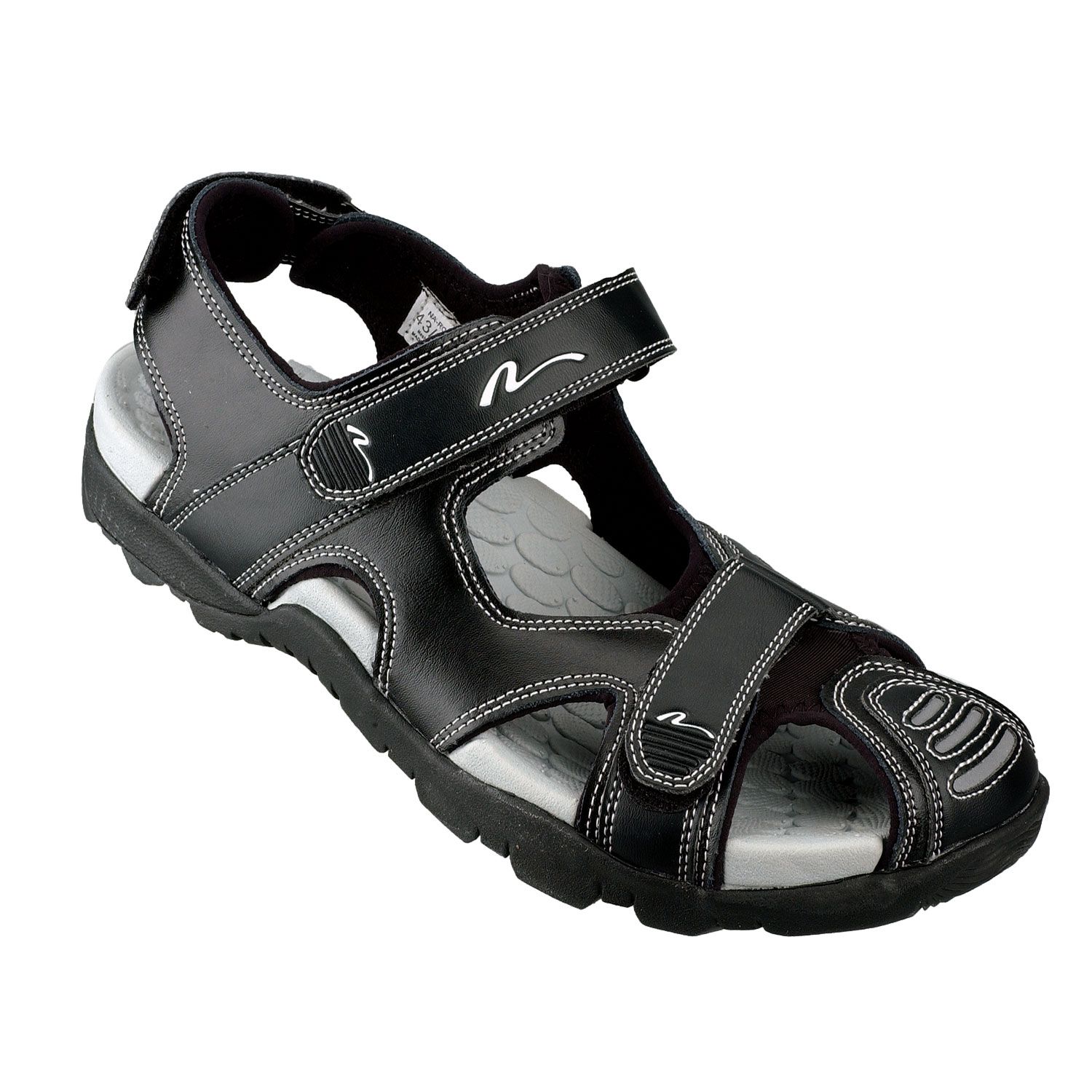
The Nashbar Ragster II represents the most budget-friendly option in this comprehensive list, typically available for around $69.99 directly from Nashbar. These sandals strap down securely and fit well with or without socks, making them versatile for different riding conditions and personal preferences.
User experiences with the footbed comfort vary significantly, with some reporting a rough footbed while others find it fairly comfortable even without socks. This variation might be due to individual foot shape differences or potentially inconsistent manufacturing. The Nashbar sandals include a toe guard over the front of the sandal, providing some protection that’s missing from more open designs.
They’re not the most comfortable or flexible when it comes to walking, positioning them as another stiff sandal option that’s better suited primarily for cycling rather than extensive off-bike activities. This makes them less ideal for bikepackers who plan to do significant hiking or extended periods of walking around camps and towns.
For budget-conscious cyclists who prioritize on-bike performance over off-bike comfort, the Nashbar Ragster II offers basic SPD compatibility and cycling-specific features at an accessible price point. However, the lower cost comes with compromises in comfort and versatility compared to higher-end options.
Making Your Choice
After researching all these sandals extensively and consulting with numerous bike travelers about their experiences and recommendations, I’ve concluded that investing in sandals with a reputation for lasting longer and providing better comfort and flexibility for hiking with my bike on bikepacking singletrack is worth the extra cost. The Shimano SD501, despite costing around $120, represents the best balance of on-bike and off-bike comfort for my specific needs.
I feel these would provide better off-bike comfort as well as acceptable on-bike performance. For my riding style, both qualities are equally important, and it’s challenging to find footwear that works well in both conditions since most options seem to excel in one area or the other. People have mentioned that the Shimano sandals aren’t as comfortable on the bike as some other sandals mentioned in this guide, but I feel I should be fine personally since I’ve toured with flip-flops for thousands of kilometers and run ultra 50km marathons in minimalist shoes. My feet have adapted to minimal or less structurally supportive footwear over the years.
The key to choosing the right cycling sandals lies in honestly assessing your priorities, riding conditions, and foot preferences. Consider whether you prioritize on-bike efficiency, off-bike comfort, durability, weight, or versatility. Most importantly, think about the types of bikepacking and touring you’ll be doing most often, as this should guide your decision more than any single feature or specification.
For riders who are primarily touring on sealed roads with occasional gravel sections, stiffer sandals like the Exustar or Nashbar options might work well. For those planning extensive off-road bikepacking with lots of hike-a-bike sections, the flexibility of the Shimano SD501 or the specialized design of the Quoc x Restrap might be more appropriate. Camp-focused riders might find the Xero Genesis or Bedrock Cairn options perfect for their lightweight, packable needs.
Remember that cycling sandals represent a compromise between the efficiency of dedicated cycling shoes and the comfort and versatility of regular sandals. The best choice is the one that aligns with your specific adventure cycling goals and personal comfort preferences.

